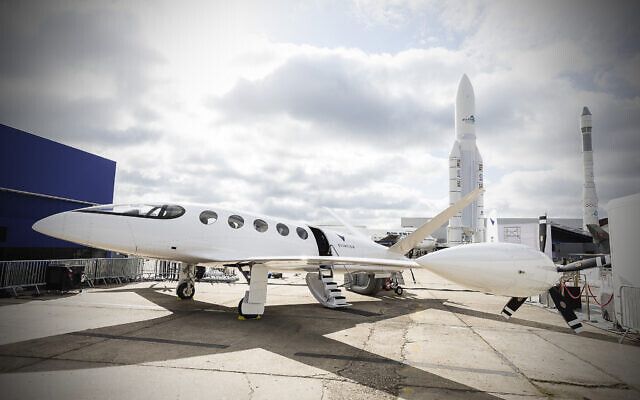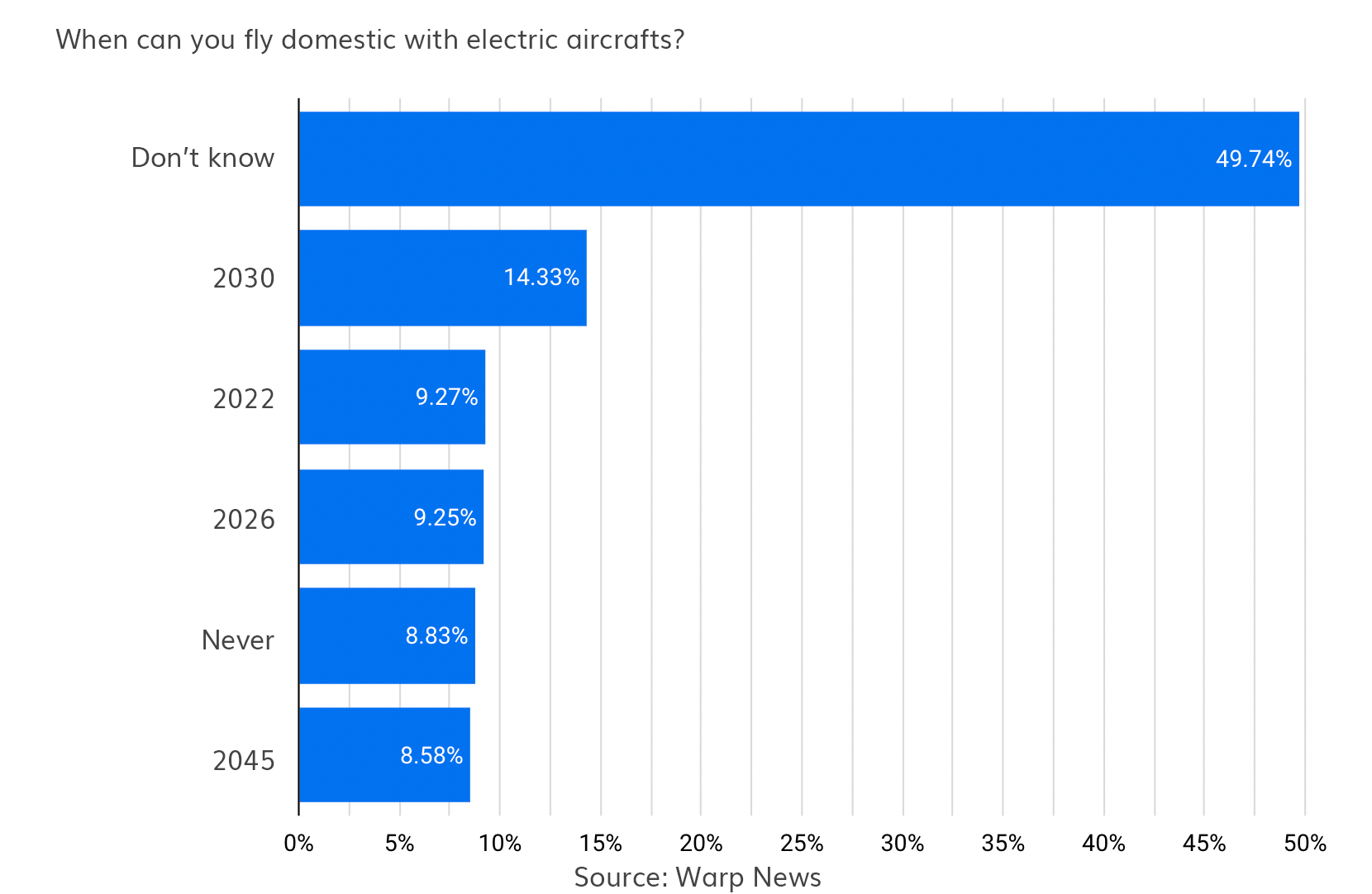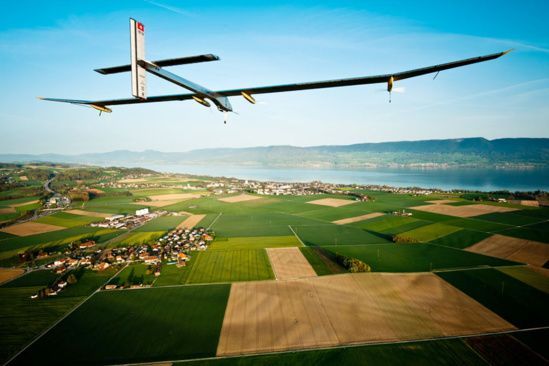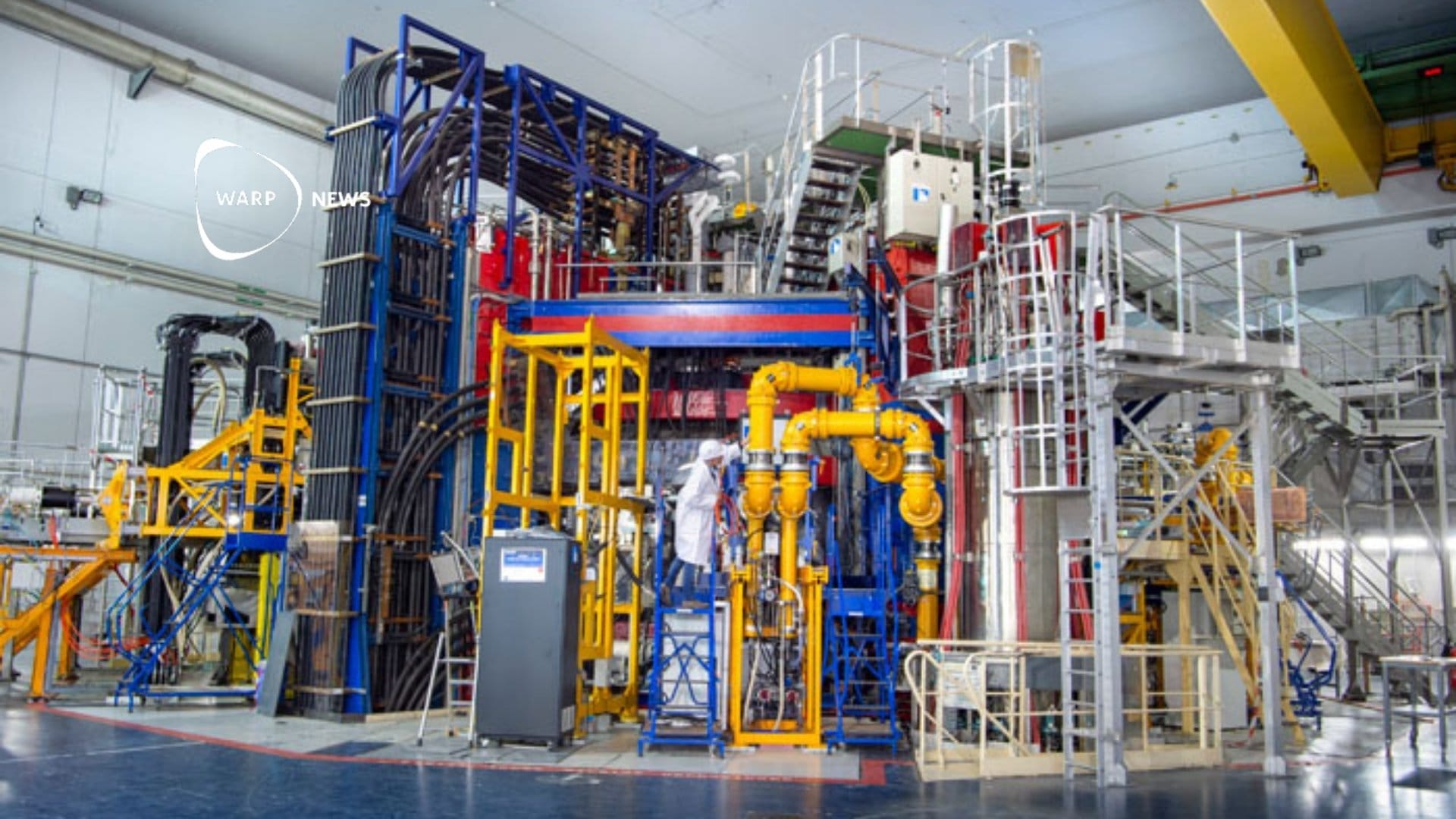
🛩 Onboarding has begun for electric airplanes
If we are serious about tackling climate change, it is time to embrace transportation with a smaller footprint on the environment. Vincent Roose explains how flying with electricity is the next big leap in aviation.
Share this story!
Summary
📉 What people think
People appear to be pretty much unaware of the possibility of electric flights. In our survey half of the respondents' answer "do not know" when asked about when commercial electric flights will be introduced. And those who have heard of it mainly see it as a mid or long-term solution. That's where they're misled.
📈 Here are the facts
Electric planes will be up and running in the near future. And there are numerous reasons to believe they will outlive traditional flights. They will have a significantly better carbon footprint than other types of flights. If their batteries as for today are still not as efficient, the price will drop whilst petrol reaches unaffordable peaks, and the infrastructure will be cheaper and require less maintenance.
With a very high demand for short-distance flights, many companies and structures have chosen to develop electric planes.
💡 The Optimist's Edge
The batteries will improve, in terms of weight, efficiency, and price. And the possibility to fly onboard electric flights will make it possible to keep on traveling, with a lesser footprint on the environment.
This green way to move will allow pursuing economic activities, and the myriads of electricity production methods should maintain a reduced price of the energy needed.
👇 How to get the Edge
To get the edge, it is essential to tackle the lack of awareness.
This article gives you the basics, but you can read further, inform yourself on the very technical aspects. And share and talk about what you have learned.
In addition to this, development and research require support. Those who do not have the financial resources can still join various projects as employees. And those who can afford to invest could choose to provide more fundings to existing structures.

📉 What people think
When asked about the possibility to fly onboard an electric airplane, the striking reality is that people have no clue. And this is understandable.
Until now, electrically powered aircraft have mainly flown for unmanned and military purposes. Or else, they were regarded as the eccentric projects of adventurers, like the Solar Impulse 2. But the idea of commercial use for electric airplanes has only attracted interest recently.

Those who have reflected on the time for electric flights see 2030 as the turning point. A reasonable horizon, that is even supported by companies like Boeing. However, this reality might happen sooner than reason says.

📈 Here are the facts
Interestingly, the planes are not exactly a new concept. As a matter of fact, we can trace the first attempts to launch electrically-powered aircraft as early as the stammering of aviation during the late 19th century.
Aviation's carbon footprint has massively risen and now accounts for between 2,5 to 5 percent of global emissions. Just like many other sectors of activity, this can and must be reduced, and electric airplanes may come as an interesting solution.
Countries like France have decided to ban flights when a train alternative takes less than two and a half hours. And indeed, trains sometimes make a perfect option. Nonetheless, there is a very high demand for short flights and railways are not always the most fitting solution for regional journeys. Hence, replacing regular planes with less damaging ones should at least diminish airlines' footprint.
Leeham News and Analysis published the prospects of electric aircraft and concluded on two weak areas for electric airplanes:
- First, the heavyweight and high price of batteries
- Second, the rather high energy consumption of batteries
As of today, electric airplanes are still losing the battle with other means of transportation on these two key points.
That said, they are also winning in other fields. Carbon footprint as mentioned. But this is not all. As we have detailed about electric cars, the costs of batteries are dropping whilst their efficiency is improving. In parallel, the price of petrol has been increasing significantly and will continue to increase.
In addition, electric planes do not require the construction of new infrastructures. A mere adaptation of current airports would be adequate. In that sense, electric planes are more practical than Hyperloop or other alternatives.
When talking to Anders Forslund, Founder & CEO of Heart Aerospace, he insists on one aspect. The operating costs that they estimate to be much cheaper. Forslund is confident that "the lower operating costs will make [a] 19-seater electric aircraft competitive to 70-seater turboprop aircraft."
And an increasing number of actors are engaging in this direction. Large companies, like Rolls-Royce or Airbus, public organizations like NASA, or small start-ups like Heart Aerospace, tell the story of an electric-flight future.

💡The Optimist's Edge
- The improvement of batteries
Electric airplanes today do not stand the comparison to regular flights. They are energy-consuming, limited to battery energy density, and a bit slower. But these weaknesses will not last forever, because batteries will become more efficient, less consuming, and cheaper.
There are multiple projects of batteries on the table. Today companies are first targeting flights of around 400km. But when interviewed on the subject, Anders Forslund stated that the "long term goal is that all flights under 1300 km - which today accounts for one-third of aviation’s emissions - will be flown on electric aircraft by the year 2050."

- The increasing petrol costs
In addition, any calculation of prospects needs to take into consideration the inexorable price increase of petrol. The resources of petrol are not unlimited, this fuel will get rare and unaffordable. The methods to produce electricity are so numerous that it makes it almost limitless in comparison.
- The environmental impact
Time is ticking. If petrol and time were unlimited, if climate change never happened, regular aircraft would not need alternatives. But reality lies elsewhere, and replacing them is urgent. An electric airplane does not submit to the same restraints.
Electric planes would require less maintenance of their infrastructure. This will reduce significantly the footprint per flight, considering the fact that the flight in itself would emit far less greenhouse gas.
- A plethora of electricity production methods
Wind power, solar, power, wave power, geothermal power,... the list of green alternatives to produce electricity is endless and growing. As a result, the production will remain stable and more competitive compared to petrol or other fossil fuels.
In the long term, electric plans will provide an additional means of transportation more respectful to the environment. A replacement for regular planes, or buses and trucks, that can complete the abilities of trains or electric vehicles. And this at a competitive cost.
👇 How to get Optimist's Edge
Like all projects early in their lifetime, if it is to survive, the electric airplane requires more public discussion and more support. Something you can do in four ways.
- Talk about it: what came as a massive trend of our survey is the lack of attention or awareness on the development of electric airplanes. But the publicity is important to gather support and give the project a chance.
- Inform yourself and learn: the more brains focus on the matter, the greater the potential to perfect the systems. The structures developing electric planes are not shy in sharing technical information, in describing how their work goes.
- Apply! Companies like Heart Aerospace are only at the start and are always looking for new talents to take part in the development of their electric plane. But we mentioned a handful of others, have a look at each of them.
- If you have the means, invest: the development of the right design, the improvement of batteries will require extensive research and studies. The more funding the better. There are multiple projects on the table and they are very keen on receiving support.
With these elements, in a near future, electric planes with commercial purposes may rule the sky as early as 2026. Ready to take off with the future?
❓What else can you do?
Feel free to share more ideas with other Premium Supporters in our Facebook group.
By becoming a premium supporter, you help in the creation and sharing of fact-based optimistic news all over the world.


